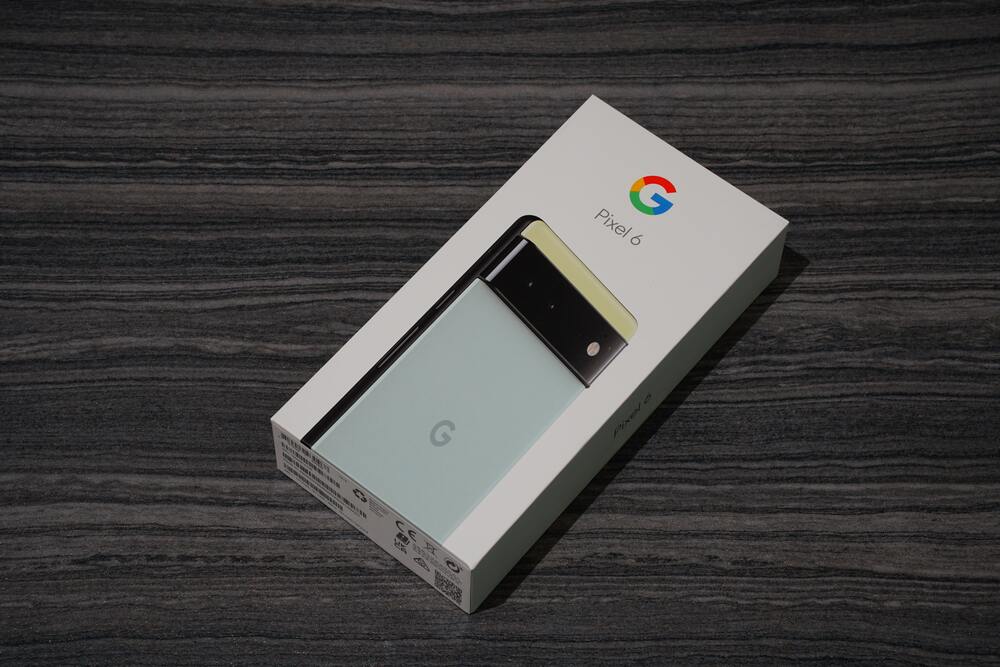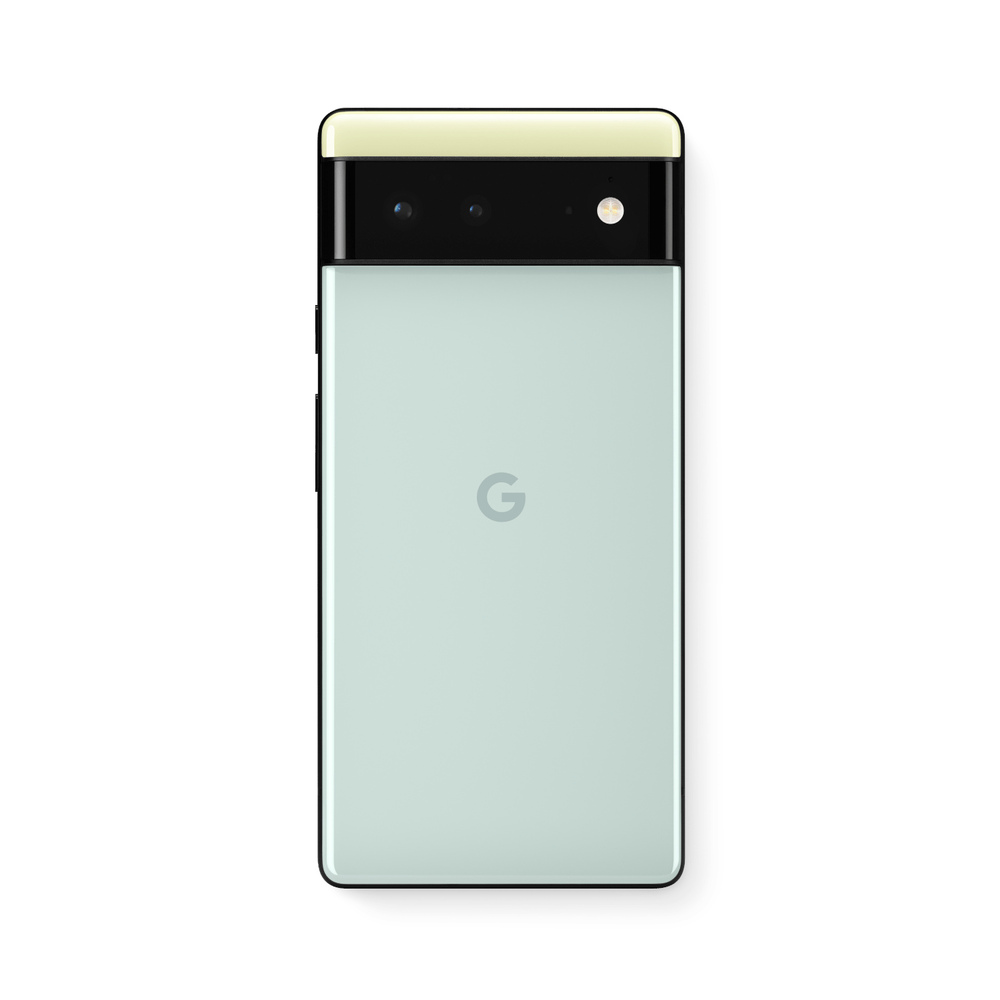The Google Pixel 6 : Test and Review
Expected for several months, the Google Pixel 6 is the worthy replacement of the previous photophones thanks to the new processor, the Tensor. Released at the end of last year, does the Google Pixel 6 still justify its status of market leader? That’s what we will see in this test.
Presentation of the Google Pixel 6
Google has created the event at the end of 2021 with no less than two new smartphones including the Google Pixel 6. The American giant intends to shake up an ultra-competitive market largely dominated by Apple and Samsung. For this, Google has invested in an innovative and neat design. In addition to this, a brand new chip of the latest generation called the Tensor. The Google Pixel 6 is part of the great lineage of photophones. This model is no exception with a photo quality largely up to expectations. In France, the model exists in two configurations, the Pixel 6 and the Pixel 6 Pro. It is offered at a price starting at 649€. All versions now include 5g technology. In terms of price, the positioning of the model is rather interesting compared to more expensive direct competition, such as the Xiaomi 11T pro or the Asus Zenfone 8.
Focus on the innovative design of the Pixel 6
The Pixel 6 creates a real break with the design of previous models. The integrated camera block is more imposing which makes it thicker. This does not only have disadvantages since it allows it to stand alone, like a tripod when placed on a flat surface. The fingerprint reader that was located on the back of the phone on the previous models is now integrated under the screen. The contours of the smartphone are made of aluminum and host the volume keys and the unlock button on the right. On the left side, we find the SIM card slot. Surprising choice of the manufacturer, no microSD slot is found on the phone. On the front side, the screen gains in size to now measure 6.4 inches on the diagonal. However, we regret the presence of black borders. As you can see, the model has gained in volume and weight with precisely 207 grams.

The characteristics of the Pixel 6 from Google
Its screen resolution
The Pixel 6 has a large screen, just like the Pixel 5 when it was released. Even if it is larger than its predecessor, the screen technology remains the same with a screen resolution of 2400 x 1080 pixels and a refresh rate at 90 Hz.
We regret however that the maximum brightness is relatively low, especially since the Pixel 5 showed much better results at this level.
The audio quality of the Pixel 6
The sound quality of the Pixel 6 is not its strong point, but it remains very honorable. Indeed, the two integrated speakers deliver a good sound, largely enough to meet your expectations when you launch a video or music. Moreover, the American manufacturer voluntarily made The Cross on the mini-jack 3.5 mm. A choice ultimately not very surprising given the dominance of USB-C. Moreover Google provides a pair of USB-C headphones with the device.
Performance and autonomy of the device
Unlike the Pixel 5, Google has made the choice to no longer equip its models with the famous Qualcomm. As a replacement, the American giant opts for an in-house solution by offering its own chip, the Google Tensor. This daring choice allows the manufacturer to control the entire learning process developed in recent years. Indeed, thanks to the Tensor, Google will be able to continue the development of its artificial intelligence, especially in the photo branch of its mobile devices. But this does not justify everything. The processor shows excellent results and is very powerful in use. According to various tests carried out by specialized agencies, it is quite simply the second best processor equipping Android smartphones. The first place remains the property of the Zenfone 8 from Asus. Indeed, in high performance mode this processor shows better results.
As for autonomy, the Pixel 5 had already made a real leap forward with a much longer autonomy than previous models. But against all expectations, the Pixel 6 does not do better, and even worse. Thus, during our test, the battery of the Google Pixel 6 lasted a little less than 17h against nearly 19h for the Pixel 5. Its 4600 mAh battery is however more important than its predecessor. This loss in autonomy is mainly due to the fact that the Google Tensor heats up a lot when it is requested. The Pixel 6 accepts a maximum charge of up to 30W when charged with the Google block. But when you buy the Google Pixel 6, you won’t receive a charger block like Samsung or Apple already do. You will only receive a USB-C to USB-C cable. With a block featuring Power Delivery technology, the Google Pixel 6 charges in 2 hours which positions it below the market average.
Does the pixel 6 retain its status as the king of photography?
The Pixel 6 offers a main camera of 50 megapixels associated with another wide angle camera of 8 megapixels. The pro version includes an ultra wide angle sensor of 12 megapixels. After testing the Pixel 6 from several angles, contexts and environments, the results are exceptional, despite the absence of the ultra wide angle that will only be felt in special circumstances. This is indeed necessary in cases where you use the portrait mode in front to divert more than one person without blurring the results. The selfie taking is very good and the colors are true to life. The portrait mode is still as effective with a quality rendering. The precision of the optical zoom is effective even if in low light, we can sometimes get half-tone results. In daylight, you will always get excellent quality photos.
In video use, the Google Pixel 6 filmed in 4K at 60 frames per second. Moreover, the main module incorporates a novelty through optical stabilization. Here again, the result is nickel. Without a doubt, this model meets the primary expectations of customers of this type of phone, namely a quality camera.
In short, Google has successfully renewed its flagship product. The American firm still justifies its title of leader in the world of photophony by offering a powerful smartphone. The quality of photos and videos will be worthy of the best digital cameras. On the other hand, the smartphone loses a lot of autonomy because of the new in-house processor that heats up. In addition, the screen lacks brightness in certain conditions. Despite these few shortcomings, it remains a reference in the field.
